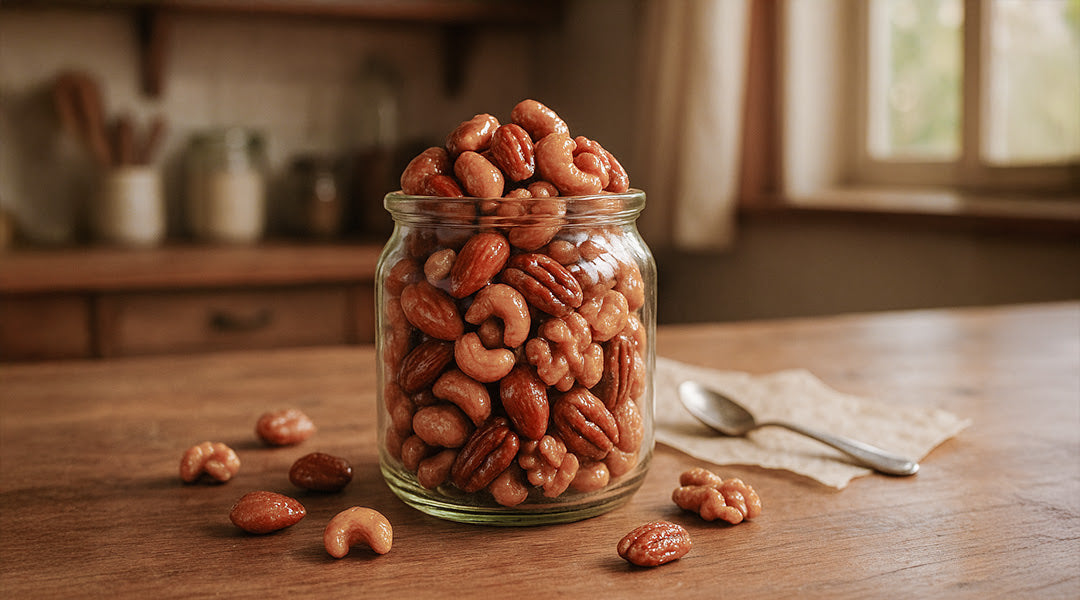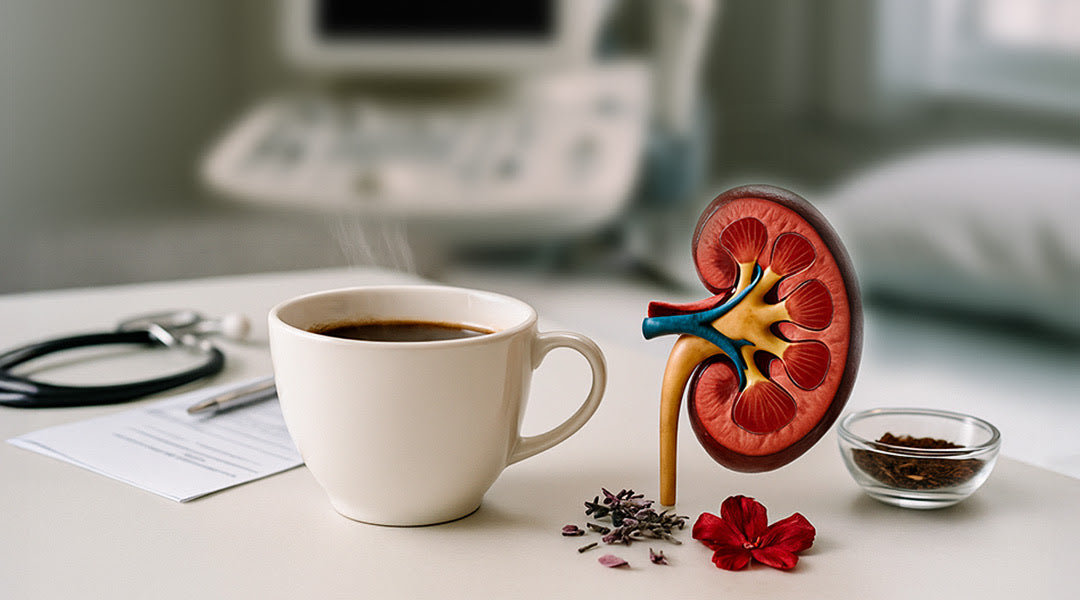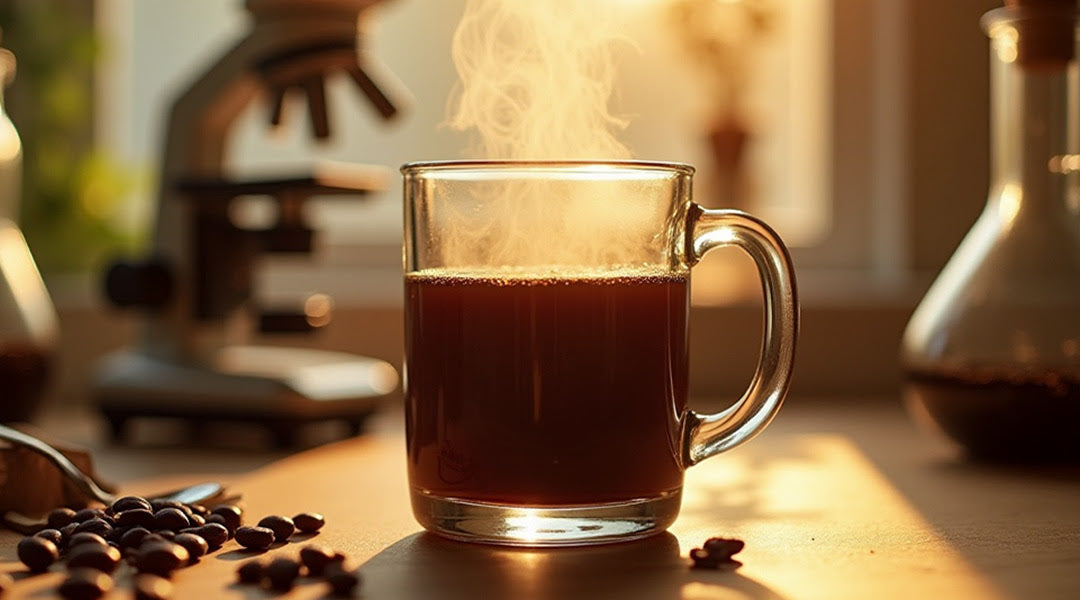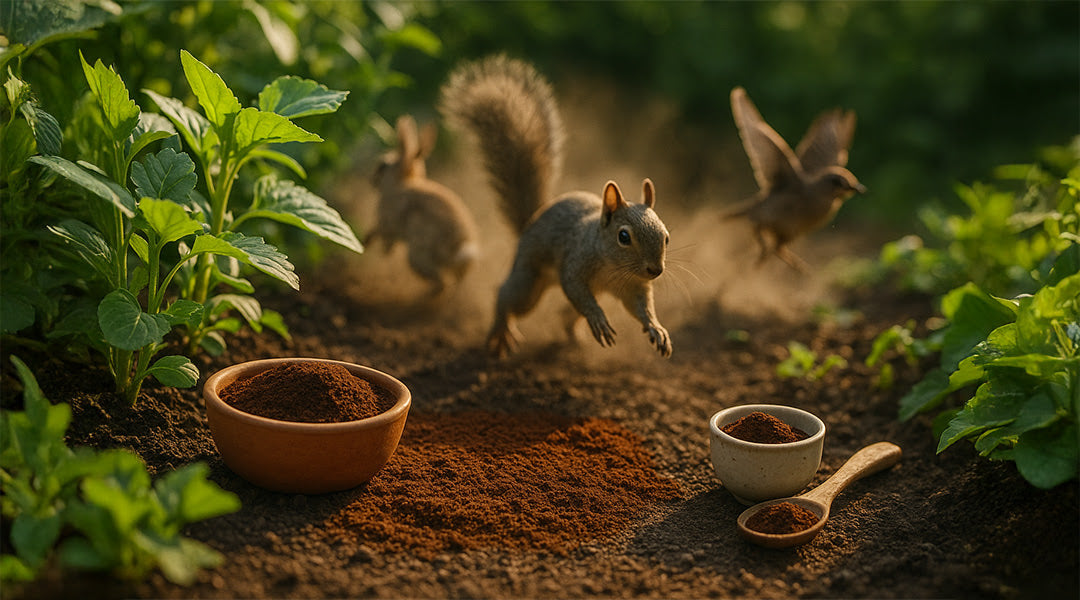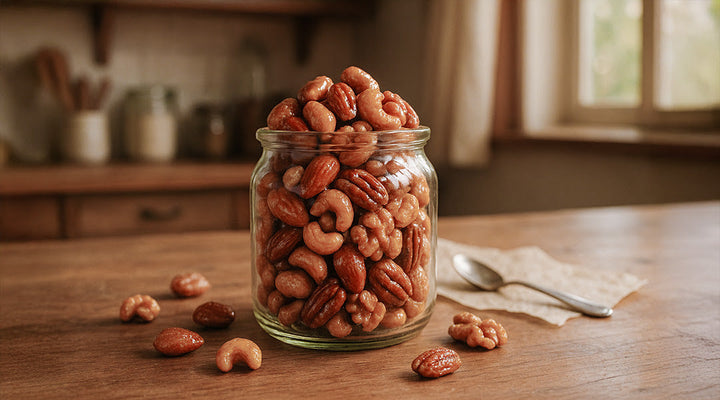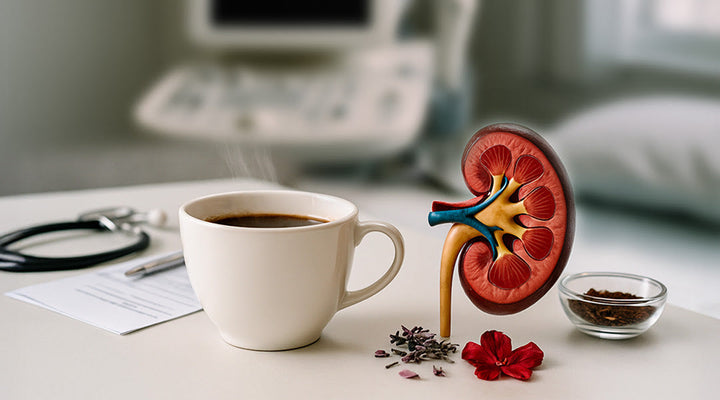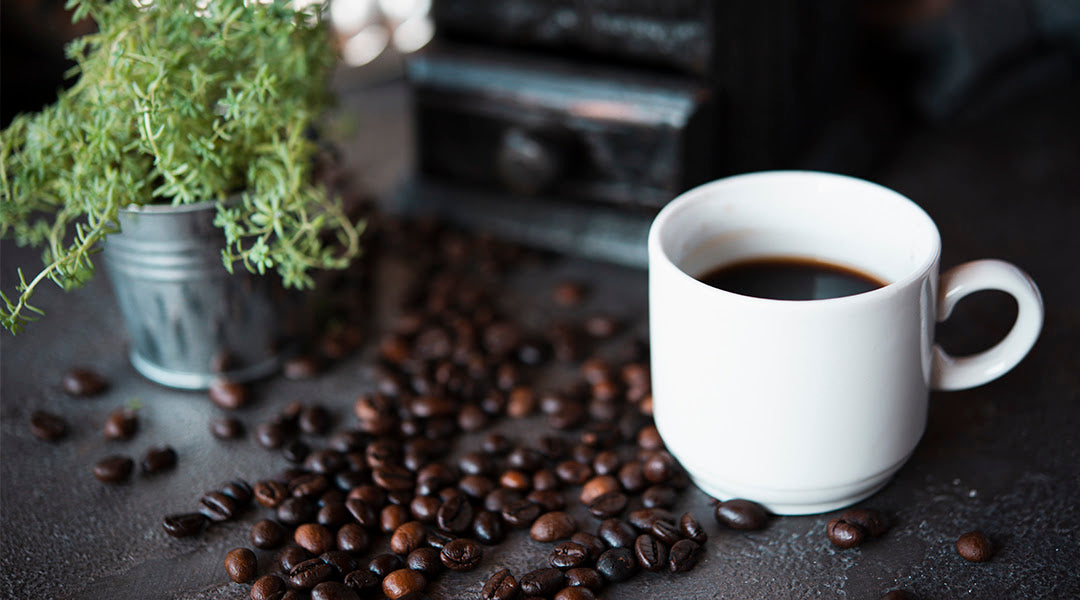
Mastering the Art of Espresso-Professional Tips & Tricks
Diving into the world of espresso brewing can initially seem daunting. Many enthusiasts find themselves overwhelmed, with some even reverting to their routine visits to popular coffee chains for just another average shot. It's easy to see why: brewing the quintessential espresso is an intricate dance. It harmoniously blends the quality of coffee beans, precise extraction time and pressure, optimal water temperature, the exactitude of the grind, the nuances of roasting, and so much more. A minor misstep in any of these variables, and your espresso can easily fall short of perfection.
Yet, the beauty of home-brewed espresso is within your reach. Whether you have an automatic machine or prefer the hands-on experience of a manual espresso maker, you can achieve that dream shot. Here are refined tips to help you extract the ideal espresso at home, paired with a comprehensive troubleshooting guide to tackle any challenges along the way.
Crafting the Perfect Espresso: The Basics
When it comes to indulging in a world bursting with flavor, aroma, and taste, brewing the quintessential cup of coffee demands adherence to specific principles. Compromising on bean quality can significantly deteriorate your espresso's essence. Similarly, using an inferior grinder can adversely influence the outcome. Of course, the espresso machine sits at the heart of the process, with the power to elevate or ruin your shot.
Espresso brewing is as much an art as it is a science. While the method requires precision, there's also a unique ritual of preparation and tasting laced with a touch of subjectivity. The "perfect" espresso shot can vary, influenced by individual preferences and even daily moods.
Nevertheless, certain foundational elements remain consistent, regardless of personal inclinations. Let's delve into these universal factors and uncover the techniques to harness them for that impeccable espresso shot.
Home Espresso Brewing
This guide delves deep into the nuances of espresso brewing, presuming a certain familiarity with the craft. However, don't be deterred if you're a novice; the insights offered here are valuable regardless of where you stand on your espresso journey. For those wishing to thread a more gradual path, starting from the roots, we suggest exploring our beginner's guide on budget-friendly espresso brewing. It offers an excellent foundation for budding baristas.
While the Moka pot does produce a type of espresso, we won't be covering it in this guide. Its output, although rich and potent, differs from what modern pump-driven espresso machines yield.
Similarly, the French press finds no mention here. Although one can brew a robust coffee using it, the same intensity can be achieved with a drip coffee maker, especially when opting for a screen filter over a paper one.
Crafting the Perfect Espresso Shot
Achieving perfection when it comes to coffee is a subjective matter. Some coffee enthusiasts prefer a ristretto while others find pleasure in a lungo and many stick with the normale. However the American coffee culture has attempted to quantify the espresso by disregarding individual preferences and focusing solely on extracting coffee's pure essence
Crafting this shot is no easy task even for experienced baristas as they can only hit the mark occasionally – perhaps once every five to seven attempts. It's interesting to note that within coffee circles this remarkable brew is referred to as the "God Shot," which essentially represents a pinnacle double ristretto.
Espresso Defined – Deciphering the Perfect Espresso Shot

Have you ever been handed an espresso that was claimed to be "perfect" and somehow failed to convince or impress you? Maybe you've brewed your espresso and wondered how it is compared to the ideal standard?
Here are some key characteristics that can guide you through evaluating what makes a "good espresso".
Crema: An authentic espresso should exhibit a persistent layer of rich and dark brown foam known as crema.This layer captures much of the flavor profile of espresso and blends seamlessly with the concentrated coffee below resulting in a distinctive and unified taste experience.
Taste: While the origin of the beans does contribute to the flavor, how they are roasted has an impact. Many people mistakenly associate bitterness with an espresso; however if a Starbucks shot tastes overly bitter it is more likely due to roasting than true espresso characteristics.
Variety in Shots: types of shots – like long, regular or ristretto – each have their own distinct profiles. These differences go beyond concentration. Reflect variations at a structural level.
Aroma: The scent of an espresso shot is undeniably unique. Although there may be similarities to the fragrances of drip coffee, Turkish coffee or other brewing methods the aroma of espresso stands out as different.
Personal Preferences: As mentioned before, everyone's perception of espresso is deeply personal. Some individuals enjoy hints of chocolate undertones while others prefer a balanced floral essence. A touch of acidity from beans can add a brightness to the espresso; however, it's important to distinguish between genuine bean acidity and sourness caused by under-extraction.
Anecdote about crema serves as a tale for beginner baristas. Once upon a time a passionate home coffee enthusiast sought guidance to enhance his espresso making skills. He expressed his concern about the perceived absence of crema in his shots. However upon evaluation it was evident that his shots were actually exceptional boasting a layer of crema and all the visual cues of top notch espresso quality. The discrepancy arose from comparing his shots to idealized images found online. It's important to remember that online representations often combine expertise, dedication, research and occasionally even misrepresentation. For example using Robusta beans or a pressurized basket can artificially enhance the amount of crema produced. The true measure of success for an espresso shot lies not in its crema but rather in its taste and the satisfaction it brings to the drinker.
Crafting the Ultimate Espresso: The Recipe

The pursuit of the " espresso" is a balance between high quality coffee beans, a top notch espresso machine and the skillful touch of the barista. Here's how this magical process unfolds behind an espresso shot;
Measurements: A standard espresso shot typically captures around 1 oz (30 ml) of brewed essence extracted from 6 to 8 grams of finely ground coffee. For those seeking a bolder experience, a double shot or 'doppio' requires 12-14 grams of coffee grounds.
Composition: Espresso is a blend of acids, proteins, sugars, aromatic oils and other essential elements. These components come together in balance to enhance both aroma and flavor.
Extraction Process: Making the ideal espresso involves directing water at a temperature between 190 to 202 °F (or 88 94 °C if you prefer Celsius) through the coffee grounds under a pressure of 9 bar (equivalent to 8.88 atmospheres).
Tamping: Once the coffee is nestled in the portafilter it is gently compressed using a tool called an espresso tamper. Applying 30 pounds of force ensures water flow through the coffee bed. However if the grind is very fine it's recommended to apply a touch during tamping.
Serving Suggestions: While espresso shines in all its glory with a hint of sugar or accompanied by biscotti on the side its versatility knows no bounds. It serves as the foundation for beverages, like lattes, cappuccinos and macchiatos.
Essentials of Espresso Brewing
When delving into the art of espresso brewing, there are a plethora of variables to consider, each playing a vital role in determining the final quality of the shot. Here's a detailed guide:
1. Brewing Dynamics:
The fundamental variables in most coffee brewing methods include water temperature, brewing duration, grind coarseness, dosage of coffee, and the volume of the resultant brew. Espresso introduces an additional factor: pressure. This heightened pressure is what distinctly differentiates espresso from its coffee counterparts. The dosage, grind coarseness, and tamping primarily determine the pressure.
2. Grind Coarseness:
Espresso demands a finer grind reminiscent of the texture of table salt. Investing in a high-quality burr grinder is pivotal, as it guarantees a consistent grind—a critical determinant in the outcome of your espresso shot. Remember, a finer grind results in increased pressure in the portafilter, leading to a slower pour. A coarser grind will have the opposite effect, accelerating the pour.

3. Water Temperature:
According to the Specialty Coffee Association (SCA) guidelines, the water should range between 195–205° F (90.5–96° C) when interacting with the coffee. For espresso, however, you might wish to experiment slightly below this range. Machines equipped with a PID (Proportional-Integral-Derivative) controller are invaluable, providing impeccable control over water temperature, thus ensuring a consistent extraction.
4. Brewing Duration:
The ideal time frame to extract an espresso is between 24 to 30 seconds. This window is predominantly governed by the grind coarseness, dosage, and tamping, with grind size being the pivotal influencer. Any deviation—either too long or too short—will compromise the extraction, resulting in either a burnt or under-extracted shot.
5. Dosage:
While dosage might appear straightforward, different beans can require slight adjustments. Precision is key. Using a scale ensures accuracy, eliminating the variances introduced by volumetric measurements like scoops.
6. Tamping:
While a consistent 30-pound pressure is the recommended tamping force, some baristas enjoy experimenting with variations. Adjusting the tamping force can subtly alter the extraction dynamics.
7. Brew Ratio & Yield:
Unlike other brewing methods, espresso evaluates the brew ratio as the relationship between the coffee used and the resultant liquid volume. Ideally, this ratio fluctuates between 1:1.5 and 1:3. Any inconsistency can inadvertently introduce unwanted compounds, altering the taste. To guarantee precision, use a scale to measure both input and output. Volumetric measurements, especially given the unpredictability of crema volume, can be deceptive. Based on the brew ratio, you're essentially crafting a 'normal,' 'lungo,' or 'ristretto.'
The Perfect Espresso –: Recipe and Expert Tips
A Basic Step-by-Step Guide to Brewing Espresso:
Brewing espresso is an intricate dance of precision and timing, yet its basic essence can be captured in a simple method. For a more in-depth exploration of each phase, peruse this entire guide.
- Begin by filling the machine's reservoir with fresh spring water, ensuring purity and taste.
- Activate your espresso machine, allowing it adequate time to reach its optimal
- temperature.
- With precision at its core, weigh out 14 grams of coffee beans—this is ideal for a double shot.
- Attain a fine grind for your beans, aiming for a consistency similar to table salt.
- Transfer the coffee grounds to your portafilter. Ensure an even spread to negate channeling during extraction.
- Gently tap the sides of the portafilter or employ a distribution tool to achieve a uniformly leveled bed of coffee.
- Apply roughly 30 pounds of pressure when tamping. For a detailed tutorial on this, refer to our tamping section.
- Attach the portafilter to the espresso machine's brew head and initiate the brewing process.
- If your setup and variables align, anticipate a double shot (doppio) to be ready within a 20-30-second window.
- Remember, espresso is all about speed, from the rapid 30-second extraction to its swift consumption. An espresso's character morphs mere seconds after its creation. Its ephemeral nature means the pursuit of the perfect shot is always on a timer.
Pro Tips for an Impeccable Espresso:
- Source the freshest beans available. Their age greatly influences flavor.
- Only grind what you need. Freshly ground beans preserve flavors better.
- If not opting for a designated espresso blend, "Full City Roast" or "Vienna Roast" are excellent choices.
- Brew your espresso between 195°F to 205°F (90°C – 96°C).
- A standard single shot requires about 7-8 grams of coffee. While there's room for experimentation, begin with the standard.
- Aim for a brew ratio between 1:2 and just under 1:3. For example, 14 grams of coffee should yield roughly 30 grams of liquid espresso.
- Your shot should ideally take between 20 to 30 seconds. This can vary based on grind coarseness and personal preference.
- An overly lengthy extraction scorches the coffee, leading to a bitter shot.
- Too quick an extraction results in insufficient contact between water and coffee, yielding a sour shot.
- Consistently tamp with a force between 20 to 30 lbs. Beginners can use a scale to gauge, but with time, intuition will be your guide. For an accurate tamp every time, consider tools like the Espro Calibrated Tamper.

The grind's coarseness can influence tamping pressure. Typically, a finer grind might require lighter tamping. However, most seasoned baristas maintain a 30 lb tamping force, adjusting the grind to achieve the desired shot.
If you're just starting out, consider a specialized espresso blend to ensure consistency.
Achieving the perfect espresso is an art and science combined. By understanding and mastering each step, you'll be well on your way to brewing excellence.
Selecting the Perfect Espresso Beans
Freshness is Key:
When it comes to espresso, giving priority to freshness is crucial. The crema, that layer, on top of a perfectly brewed espresso shot is created by combining CO2, coffee oils and water. During extraction these ingredients come together to form the crema by emulsifying the coffee oils and CO2. As coffee ages it loses these components, the oils and gasses. This decline in presence explains why pre ground coffee can never match the quality of ground beans. Therefore it's vital to choose properly stored coffee or better yet, freshly roasted beans.
Can Any Coffee Beans Be Used for Espresso?:
At its core espresso is defined by its brewing method rather than the type of beans or roast used. In theory any coffee beans can be transformed into espresso. However delving deeper into this topic reveals a more intricate scenario.
Roast Level:
Darker roasts are more suitable for extraction, as their cellular structure undergoes changes and softening during the extended roasting process. These beans result in a flavorful espresso shot. On the other hand lighter roasts have the potential to produce a nuanced espresso with many aspects of the beans original character preserved.
However it's more challenging to extract with perfection and it requires a higher level of precision.
Origin Matters:
The origin of the beans plays a role in determining the quality of the espresso. For instance Brazilian beans are often preferred for their ability to produce a crema. Additionally, having acidity in espresso is generally considered a drawback although some coffee enthusiasts, including myself appreciate that tangy flavor.
Recommendations:
When venturing into making espresso, Brazilian beans are a safe choice. They consistently deliver flavor and a creamy crema. If you're specifically looking for beans labeled for espresso you're likely on the right track.
Common Espresso Brewing Mistakes: A Guide to Perfecting Your Shot
Crafting the espresso is an art form where every step matters—from the five second pre infusion to the subsequent 25 second extraction.. What are some potential pitfalls along the way? Let's explore nine errors that often occur when making espresso:
Stale Coffee:
If your coffee has been exposed to air for more than 4 hours after grinding it's likely to have oxidized. It's important to prioritize freshness to capture the range of flavors that espresso can offer.
Tamping Troubles:
Improper tamping of the coffee bed can lead to difficulties. Whether it's soft or too forceful, uneven tamping can result in extraction. To ensure consistency evenly distribute the coffee grounds across the surface of the portafilter. Flatten them out, spreading them all the way to the edges.
Extraction Timing Errors:

Timing is crucial here. If your shot brews quickly you'll end up with a sour tasting espresso. On the other hand if it takes long bitterness will dominate. Aim for a range where you achieve a balance.
Lack of Machine Maintenance:
Regular care and maintenance are essential for an espresso machine's well being. Regular cleaning and descaling are necessary to prevent mineral buildup and ensure performance.
Misjudged Grind:
The texture of your coffee grounds is pivotal in achieving a shot of espresso. Grinding finely may lead to over extraction while using a coarser grind might result in an under extracted shot.
Subpar Coffee Beans:
Apart from considering improper roasting levels the inherent quality of the beans themselves plays a role. Harvested or processed beans, as well as using inferior bean varieties can have a negative impact on the taste of your espresso.
Water Woes:
The quality of the water you use is just as important as the quality of your beans. If your tap water doesn't taste good it can affect the flavor of your espresso. It's always an idea to use fresh water and if necessary consider using bottled water.
Temperature Inconsistencies:
To ensure good results, always preheat your espresso machine and cups before brewing. Running a blank shot through the machine or filling cups with water beforehand helps maintain the right temperature. Cold equipment can significantly hinder the extraction process.
Equipment Limitations:
While user errors can sometimes cause issues there are also problems that come with using low quality equipment. While you may not be able to fix problems with an espresso machine you already own, it's important to make decisions when investing in machines. Factors, like water temperature and sufficient pressure should be taken into account: premium machines that have a PID controller offer control over these factors.
Crafting an Espresso That's Uniquely Yours
Normale vs Lungo vs. Ristretto vs. Americano

Espresso, with its rich tapestry of flavors and traditions, is a deeply personal affair. While the "perfect" espresso is often spoken of, it's crucial to remember that perfection is subjective. What's revered by a seasoned barista may not be your cup of coffee.
Take Starbucks, for instance. While many coffee lovers might criticize their espresso for being overly roasted and bitter, countless others can't start their day without it. It underscores the point: Your ideal espresso is the one tailored to your preferences.
Customize Your Experience
Normale:
The quintessential espresso shot, a "normale," encompasses the full spectrum of flavors in roughly one fluid ounce. It serves as a benchmark for other variations.
Lungo:
Stretch out the extraction process just a bit, and you get a "lungo." This version is less intense than a normale due to the increased water volume. Interestingly, while the flavor becomes milder, the caffeine content gets a slight bump.
Caffè Crema:
Venture further into the world of extended extractions, and you'll find the "caffè crema." It carries the essence of espresso but offers a gentler experience on the palate. Moreover, it possesses slightly higher caffeine content than a lungo.
Caffè Americano:
A close cousin to the long shot, the "caffè americano" is crafted by pouring a standard espresso shot and then adding an equal amount of hot water. It provides the intensity of a caffè crema but retains the nuanced flavor profile of espresso, albeit in a diluted form.
Ristretto:
On the opposite end of the spectrum, the "ristretto" is a concentrated espresso shot. By truncating the extraction time yet allowing the same water volume to permeate the coffee grounds, a ristretto boasts heightened flavors and aromatic oils. Surprisingly, it contains less caffeine than its counterparts. Characterized by a vivid and intense taste profile, it's less bitter and packs a punch in the flavor department.
Mastering the Art of Serving and Drinking an Espresso
The Art of Espresso Presentation
Entering the realm of espresso is more than about enjoying a cup of coffee; it's a ritual. Each step when approached with care enhances the experience.
To begin, select the cup. While porcelain cups have long been favored for their ability to retain heat and preserve the crema and flavors, walled glass cups are also an excellent option. They do not visually enhance the experience by showcasing the layers of espresso but also provide insulation. For taste ensure that both the cups and portafilter are pre warmed.
The Water-Espresso Balance

Before diving into the intensity of espresso consider taking a sip of water. This not only refreshes your palate but also prepares it by eliminating any lingering tastes. Additionally keep in mind that coffee can be dehydrating so sipping water alongside your espresso can be beneficial.
Due to its nature espresso can sometimes be intense for both your palate and stomach. Alternating sips of espresso with water doesn't dilute its flavor and can make it easier, on digestion.
When it comes to types of water sparkling mineral water can be particularly effective because the carbonation helps cleanse the palate by neutralizing and washing away any lingering flavors.,
For those who enjoy the taste of a well-crafted espresso it's a pleasure to end the ritual with that final sip. However if you happen to have an espresso shot that doesn't meet your expectations, having a sip of water at the end can help refresh your palate.
Complementing Espresso with Sweets
Before diving into your espresso you might want to give it a stir even if you prefer it without any added sweetness. This simple action ensures a distribution of flavors. Reduces the chances of the first sip being overly bitter. Many people find joy in pairing their espresso with something like a sprinkle of sugar or enjoying it alongside a biscotti or another flavored cookie. This contrast between sweetness and richness often brings out the flavors of the espresso making each sip a dimensional experience.
Debunking the 'Dead Espresso' Myth

In terms of appearance, yes, an espresso shot that sits for around 30 seconds might lose its layer of crema as it blends into the drink. Some people may perceive it as the espresso losing its vitality. However many coffee enthusiasts, including those who enjoy sipping on a shot over a longer period of time might disagree. While the temperature of an espresso may decrease slightly, its essence—the flavor—remains intact. The discussion about " espressos'' is subjective. There's more to it than what meets the eye (or taste buds).
The Flavor Profile of an Exquisite Espresso
A expertly prepared espresso is like a symphony of flavors that tantalize your palate. At its core you can detect hints of fruitiness and floral undertones that bring a freshness to the brew.
When it comes to espresso you might notice hints of sweetness that bring to mind the flavors of chocolate and caramel.
Interestingly a touch of bitterness in an espresso doesn't necessarily mean it's flawed. In fact when balanced with a mild acidity it can add depth and complexity to the flavor. This delicate balance ensures that the espresso has a rich taste without being overly sharp or flat.
Frequently Asked Questions (FAQs)
What is espresso?
Espresso is a method of brewing coffee where hot water is forced through ground coffee beans under pressure. This process creates a form of coffee known as an espresso shot.
How do I choose the best espresso beans?
To make the espresso start with roasted beans that have been stored properly or freshly roasted just before use. It's recommended to grind the beans before brewing to preserve their oils and gases. Coffee beans from Brazil are often preferred for making espresso because they produce a layer called crema.
Can I use any coffee beans for espresso?
Technically speaking any type of coffee beans can be used for making espresso. However the roast level and origin of the beans can impact its flavor profile. Darker roasts are easier to extract flavors from while lighter roasts may retain flavors but require precise extraction techniques.
What are some common issues with brewing espresso?
Some issues that can arise are the use of stale coffee, improper tamping, extraction time, for shots using an incorrect grind size and neglecting proper maintenance of the espresso machine.
How should I serve and drink espresso?
Espresso is best served in warmed porcelain or double-walled glass cups. To enhance the experience, drink a few sips of mineral water (preferably sparkling) before and in between sips of espresso. This helps cleanse the palate and can mitigate the espresso's intensity.
Is it okay to mix cookies or biscuits with espresso?
Yes, many people enjoy a sweet treat like a biscotti with their espresso. The cookie's sweetness can provide a delightful contrast to the espresso's rich and slightly bitter flavor.
What is a "dead espresso"?
The term "dead espresso," as used in some barista circles, refers to a shot that's older than 10 seconds. However, the term is subjective. While an espresso shot might lose its crema after sitting for some time, its fundamental flavors remain, making it enjoyable for many.
How should a well-prepared espresso taste?
A high-quality espresso should offer a balanced profile, hinting at fruity and floral undertones, complemented by sweet notes resembling chocolate and caramel. A mild bitterness balanced with a touch of acidity indicates a well-brewed shot.
Why is there a debate about adding water to espresso?
Water, especially carbonated mineral water, can cleanse the palate and help mitigate the intensity of espresso, making it gentler on the stomach. Some purists believe espresso should be consumed as is, while others appreciate the palate-cleansing effect of water.
Do I always need a special machine to make espresso?
While traditional espresso is made using a specialized machine that applies pressure, there are manual methods like AeroPress that can produce espresso-like coffee. However, for authentic espresso with rich crema, a dedicated machine is recommended.
Check out Lifeboost Coffee Espresso.


